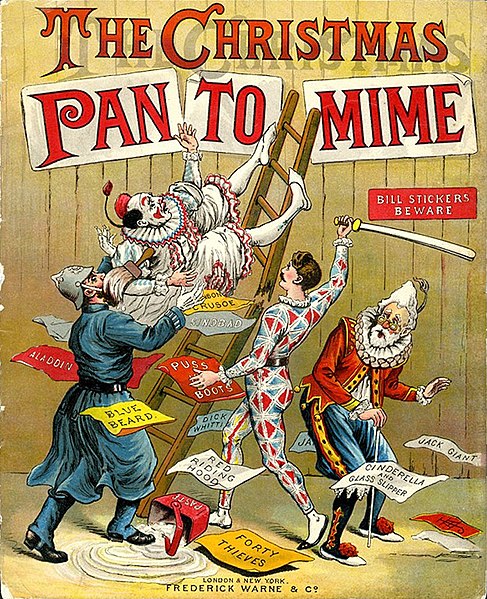A pantomime horse is a theatrical representation of a horse or other quadruped by two actors in a single costume who cooperate and synchronize their movements. One actor plays the front end, including the horse's head and its front legs, in a more-or-less upright posture and with a reasonable field of view afforded by eye holes in the horse's head. The other actor, playing the rear end of the animal, must bend at the waist so that their torso is horizontal like that of a horse and put his arms around the waist of the first actor. They can see little, although there are normally eye holes in the bottom part of the horse's torso to enable them to see where they are putting their feet and to enable them to breathe.
Actor with pantomime horse from 1869 or 1870
Runners at the 2009 Pantomime Horse Grand National in Birmingham, England. The costumes here are designed for only a single person.
Pantomime is a type of musical comedy stage production designed for family entertainment. It was developed in England and is performed throughout the United Kingdom, Ireland and in other English-speaking countries, especially during the Christmas and New Year season. Modern pantomime includes songs, gags, slapstick comedy and dancing. It generally combines gender-crossing actors and topical humour with a story more or less based on a well-known fairy tale, fable or folk tale. Pantomime is a participatory form of theatre, in which the audience is encouraged and expected to sing along with certain parts of the music and shout out phrases to the performers.
The Christmas Pantomime colour lithograph book cover, 1890, showing harlequinade characters
2nd-century Macedonian theatrical sculpture, thought to represent a pantomime's mask
John Rich as Harlequin, c. 1720
Playbill of an English circus and pantomime performance, 1803






